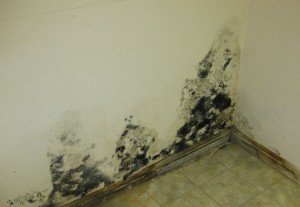Damp comes in many different forms but out of them all rising damp can be considered as the most disturbing. Just so you know, rising damp is a major problem not only in the UK but also in the whole world. This is among the primary reasons why building materials like concrete, bricks, and stone end up decaying. Even during the initial phase, rising damp can cause damages on external finishes and produce unpleasant odours. But, what is rising damp in the first place? What causes this worldwide phenomenon?
Rising Damp – A Quick Definition
Rising damp refers to slow movement of water that starts from the walls’ bottom portion to the higher portion. This concern is common not only in older buildings but also in new houses with flaws in construction.
This takes place once the moisture coming from the ground rises up to the gaps in between bricks and through the tiny cracks in the masonry work. This can also be because of the water’s adhesive property that lets it move upwards while pulling other droplets with it. This process is what you call capillary action.
Once moisture deposits in a building’s walls, this can result to significant damage to its overall appearance after some time. This is why it is important that you detect what causes rising damp to prevent further damages.
Rising Damp and Its Causes
Dampness is directly related to the existence of mould in different parts of the building affected by moisture. It is not a secret that mould has a very high growth factor with the ability to quickly spread when the conditions are favourable. It is also among the primary reasons behind damp concerns since this encourages moisture to spread.
Many people might assume that damp is coming from the walls. However, more often than not, this comes from the ground. This means that rising damp takes place once the moisture that sits under the structure comes out as humidity.
Signs of Rising Damp
There is no need for you to be an expert so you can diagnose damp problems. However, it will help if you know the signs of rising damp to know if your home needs a rising damp treatment. Watch out for the following telltale signs of rising damp to help you determine if that damp you noticed in your house is really a rising damp or if it is only a water splash caused by leaking pipe. The most common symptoms of rising damp include the following:
- ïSkirting boards that are starting to deform
- ïWood frames with signs of rot
- ïBubbling plaster
- ïPaint starting to come off from the walls
- ïMould growth on furniture and wall
- ïWhite powder showing up on walls
- ïTidemarks on walls
Solve Your Rising Damp Problem Today
Rising damp isn’t a problem that you can just take for granted. For this reason, it is always best to get the help of professionals who can diagnose the issue and solve it in the most effective way.

 020 8340 8338 or 07976 435 777
020 8340 8338 or 07976 435 777




 If you are unfortunate enough to experience fire or flood damage, call Fire and Flood, they take the stress out of the process and will have your place back to normal in no time.
If you are unfortunate enough to experience fire or flood damage, call Fire and Flood, they take the stress out of the process and will have your place back to normal in no time.